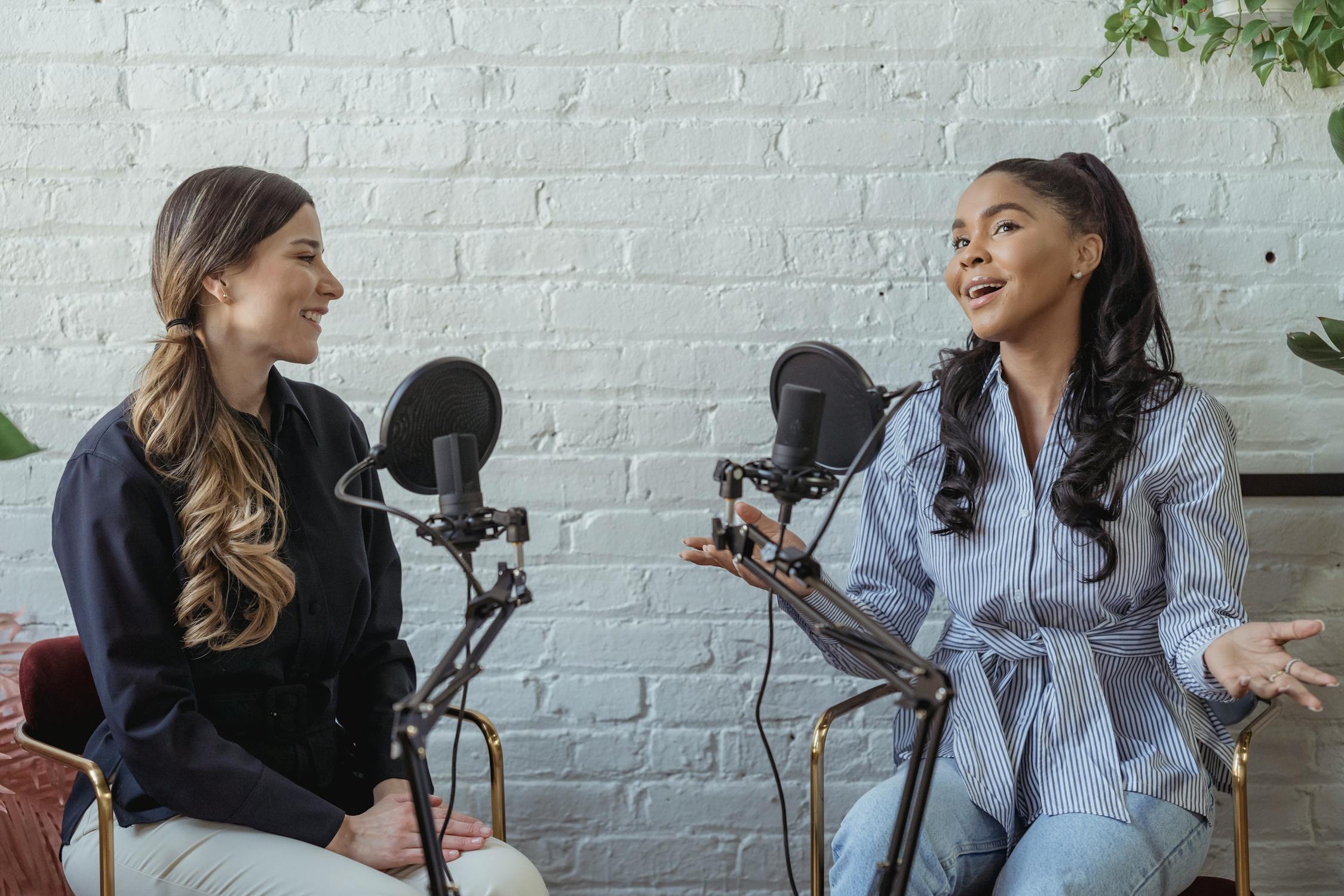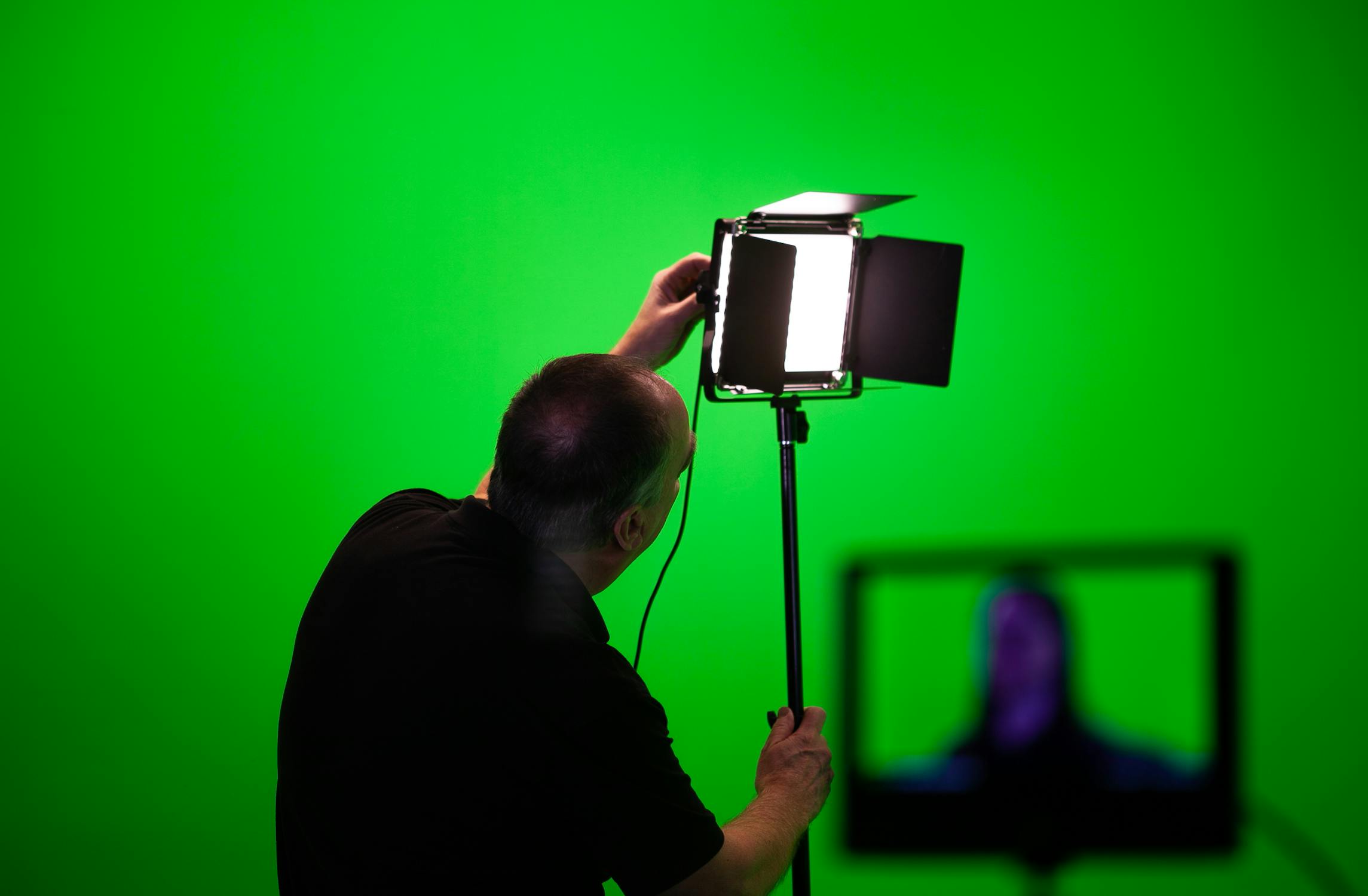
Interview lighting is an important skill for those of us who create visually engaging and professional quality corporate videos. In this article we are going to have a look at the ways in which you can improve your lighting for interviews, and how you can use a particular space to produce the best results.
Choose a great location and angle

Start by finding a great location, a visually interesting camera angle with a great background. Lighting can create a great deal of dimension and atmosphere and ultimately a visually stunning interview, but if you select a dull angle or uninspiring background then you will have your work cut out for you in terms of creating a great shot.
Therefore you should choose an interesting background with inherent character, interesting shapes, colours or interesting natural light. A shot that has a large amount of distance behind the subject can also add depth to the shot, and increase the impact of your shot.
Lighting – Getting started
Have a look at the space, the existing light. Turn off the lights in the room and see which direction the natural window light is coming from, then make that the side which you place the key light. Its better to work with what is already happening in the room, and embrace it rather than fighting against it.
DISC is an acronym that can be helpful in thinking about lighting: (DIRECTION, INTENSITY, SOFTNESS, COLOUR)

Direction
Starting with the main light or ‘key light’, position it 30-45 degrees to the right of the subject. In terms of height, the light should also be 30-45 degrees above the subject. By positioning the key light in this way, we have started to light the subject in a way that is flattering, interesting and pleasing to the eye.
Intensity
Fill light is used to balance out the key light in photography and videography by filling in the shadows created by the key light. The fill light is typically positioned opposite to the key light and is of lower intensity. It can be created using a second light or by bouncing the key light. The ratio of light between the key light and the fill light is subjective and depends on the style of the shoot. In some cases, no fill light is used for a more dramatic look. The background light should be balanced with the subject light to avoid over-exposure or under-exposure. A backlight, hair-light, or kicker light can also be used to separate the subject from the background or to add depth. At Camera Crews, we use a 150W dimmable Dedolight is used as a backlight.
Softness
Soft lighting is considered more flattering for subjects as it reduces harsh shadows and creates a more natural and subtle look. The larger the light source and the closer it is to the subject, the softer the light will be. Bounced light from a reflective surface, such as polystyrene or a silk, is also soft and pleasing. Light manufacturers offer softboxes and Kinoflos that produce soft, flattering light. At Dream Engine, Kinoflos are used as the key and fill lights for interviews due to their naturalistic light, quick setup, and cool operating temperature that makes subjects more comfortable. Kinoflos are also convenient for packing up as they don’t need to cool down first.
Colour
When lighting for interviews, it’s important to consider the desired color temperature. To create a unified color of light, it’s best to match the color temperatures of the lights with the existing light in the space. Unless you aim to create a dramatic color contrast, assess the existing light, whether it be natural or artificial (e.g. tungsten lights, fluorescents, sodium vapor), and either block it out or complement it with your own lights. Make sure to maintain color consistency by using gels or changing tubes and being mindful of the color temperatures.
Conclusion

By taking the time to light the interview properly, we can create a visually interesting shot and direct the audiences eye to the subject. In this way, our visuals can really enhance the story/program. To recap what we discussed in this article – choose a great background, place your key light and fill light roughly opposite one another, use soft light and use a back light. Now that the light is all set-up it’s time to think about how to feel like a natural on camera!
Read More

Ever wondered how some people just seem to have a knack of being a natural on camera?
Yes, it can come naturally for some people, but for most it takes some work and coaching to look and sound comfortable on camera. There are many things we like to do to create a relaxed environment when we shoot, but there are several tricks and techniques you can utilise to make yourself as natural and authoritative as possible.
Read More

While it is best to use a professional camera crew to film your Melbourne video productions, we understand that sometimes it isn’t an option. A short social media post or blog update may not require an experienced crew to get your message out, but there can be dangers even with this format.

KeptMe is a web/mobile based app that provides a platform for recording a child’s education as well as providing seamless communication between parents and teachers. Dream Engine were given the challenge to make an advertising video that demonstrated the KeptMe app by telling the story of Jake as he looked back on his journey with KeptMe. Take a look at how we approached the concept and what we came up with. (more…)
Read More
Tag Heuer is an internationally recognised Swisse watch maker. They create premium luxury products and have built a marketing image to support this. When football heavy-weights Real Madrid took on Manchester City at the MCG in Melbourne, Tag Heuer organised a team of champion football freestylers to warm up the crowd. Dream Engine were given the challenge to create an event video and edit it that night so that it could hit Tag Heuer’s social media channels the next morning.
(more…)

Time-lapse photography is the most effective way to show progress over time in a video form. It can show a flurry of activity at high speed, showing progress in a much more easily digestible way. You can compress hours, days or even months into seconds with a time-lapse, potentially showing construction, artistic works or manufacturing. Here are some tips for how to use time-lapse in your corporate video. (more…)
Read More

This post is for anyone that thinks their business couldn’t be the subject of an interesting corporate video. Video is a powerful way to communicate, educate and promote. If you’re putting it off because you think that what you do isn’t captivating enough, then you’re missing a great opportunity. (more…)
Read More

Thorough planning is essential to filming an effective event video. There are no second chances when it comes to live events, if you miss it you miss it, there are no reshoots, no chance for a second take. Preparation can also make for a much more relaxed atmosphere if you know what’s about to happen. Charged batteries, cameras and sound set-up and tested, a location scout to check out the venue all go a long way to ensuring you’ll capture everything without any hiccups. (more…)
Read More
Good internal communication is a key part of any exceptional team. This is because internal communication keeps staff educated, informed, and inspired. With that in mind, it’s not something an expanding company can ignore. It might sound simple, but getting it right and making an engaging video isn’t easy. An internal communication video is a simple and highly engaging way to communicate. This post shows you the best way to incorporate it into your internal communication strategy.
(more…) Read More